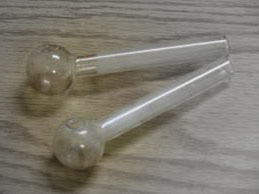Effects of Methamphetamine
According to the National Institute on Drug Abuse, methamphetamine is a highly addictive central nervous system stimulant. The majority of methamphetamine used in the United States comes from domestic or foreign super labs. Methamphetamine is also easily made in small clandestine laboratories across the nation, with relatively inexpensive over-the-counter ingredients. The combination of these factors makes methamphetamine a drug with high potential for widespread abuse and addiction.
 Methamphetamine is most commonly known as “meth,” “speed,” and “chalk.” In its smoked form, it is often referred to as “ice,” “crystal,” “crank,” and “glass.” It is most commonly a white, odorless, bitter- tasting crystalline powder that easily dissolves in water or alcohol. The drug was developed early last century from its parent drug, amphetamine, and was used originally in nasal decongestants and bronchial inhalers. Producing similar effects as amphetamine, methamphetamine causes increased activity and awareness, euphoria, decreased appetite, and a general sense of well-being. However, methamphetamine differs from amphetamine in that at comparable doses; much higher levels of methamphetamine get into the brain, making it a much more potent stimulant drug. It has also been proven to have longer lasting and more harmful effects on the user’s central nervous system.
Methamphetamine is most commonly known as “meth,” “speed,” and “chalk.” In its smoked form, it is often referred to as “ice,” “crystal,” “crank,” and “glass.” It is most commonly a white, odorless, bitter- tasting crystalline powder that easily dissolves in water or alcohol. The drug was developed early last century from its parent drug, amphetamine, and was used originally in nasal decongestants and bronchial inhalers. Producing similar effects as amphetamine, methamphetamine causes increased activity and awareness, euphoria, decreased appetite, and a general sense of well-being. However, methamphetamine differs from amphetamine in that at comparable doses; much higher levels of methamphetamine get into the brain, making it a much more potent stimulant drug. It has also been proven to have longer lasting and more harmful effects on the user’s central nervous system.
Meth Use & Effects
 Methamphetamine is available in many forms and can be injected, snorted, smoked, or orally ingested. The preferred method of methamphetamine abuse varies by geographical region and has changed through the years. Smoking methamphetamine, which leads to very fast uptake of the drug in the brain, has become more common in recent years, amplifying methamphetamine’s potential for addiction and adverse health consequences. Methamphetamine also alters the users mood in different ways, depending on how it is abused. Immediately after smoking the drug or injecting it intravenously, the user experiences an intense flash or “rush” that lasts only 5-10 minutes and is described as extremely pleasurable and euphoric. Oral ingestion or snorting produces euphoria – a high but not an intense rush. Oral ingestion produces effects within 15 to 20 minutes, and snorting produces effects within 3 to 5 minutes.
Methamphetamine is available in many forms and can be injected, snorted, smoked, or orally ingested. The preferred method of methamphetamine abuse varies by geographical region and has changed through the years. Smoking methamphetamine, which leads to very fast uptake of the drug in the brain, has become more common in recent years, amplifying methamphetamine’s potential for addiction and adverse health consequences. Methamphetamine also alters the users mood in different ways, depending on how it is abused. Immediately after smoking the drug or injecting it intravenously, the user experiences an intense flash or “rush” that lasts only 5-10 minutes and is described as extremely pleasurable and euphoric. Oral ingestion or snorting produces euphoria – a high but not an intense rush. Oral ingestion produces effects within 15 to 20 minutes, and snorting produces effects within 3 to 5 minutes.
As with most stimulants, methamphetamine is most often used in a “binge and crash” pattern. Because the pleasurable side effects of methamphetamine diminish even before the drug concentration in the blood falls significantly – the user try’s to maintain the high by consuming more of the drug. In some cases, abusers indulge in a “run,” a form of binging where the user forgoes food and sleep while continuing abuse from several days to a year. Get help now. Call 800-468-6933
Short-Term Effects of Methamphetamine
Acting as such a powerful stimulant, methamphetamine, even in very small doses, can increase wakefulness and physical activity and decrease the user’s appetite. Methamphetamine has also been proven to cause a variety of cardiovascular problems, including rapid heart rate, increased blood pressure, and irregular heartbeat. Hyperthermia (elevated body temperature) and convulsions may also occur with methamphetamine overdose, which can result in death, if not treated immediately.
The majority of the pleasurable effects of methamphetamine are believed to result from the release of extremely high levels of the neurotransmitter known as dopamine. Dopamine is most commonly involved in motivation, the experience of pleasure, and motor function, and is a common mechanism of action for most drugs of abuse. The elevated release of the neurotransmitter dopamine produced by methamphetamine is also thought to contribute to the drug’s deleterious effects on nerve terminals in the user’s brain.
Long Term Effects of Methamphetamine
With long-term methamphetamine abuse comes many negative consequences, including addiction. Addiction is defined as a chronic, relapsing, and characterized by compulsive drug seeking and abuse, accompanied by functional and molecular changes in the addict’s brain. In addition to becoming addicted to methamphetamine, chronic abusers exhibit symptoms that can include insomnia, confusion, anxiety, mood disturbances, and violent behavior. The user can also display a number of psychotic features, including delusions, visual and auditory hallucinations, and paranoia (for example, the sensation of bugs crawling under the user’s skin). The psychotic symptoms have been shown to last for months or years after methamphetamine abuse has ceased, and stress has been shown to cause spontaneous recurrence of methamphetamine psychosis in formerly psychotic methamphetamine users. Get help now. Call 800-468-6933
Tolerance to methamphetamine’s pleasurable effects can develop with chronic abuse. In an effort to intensify and bring a user back up to the desired effects, abusers may take increasingly higher doses of the drug, take it more frequently, or alternate their method of drug intake. Withdrawal from methamphetamine usually occurs when a chronic abuser stops taking the drug; symptoms of withdrawal include anxiety, depression, fatigue, and an intense craving for the drug. The National Institute On Drug Abuse reports that transmission of Hepatitis B, C, and HIV can be consequences of methamphetamine abuse. Methamphetamines toxic mind altering effects, regardless of how it is taken, can also alter judgment and inhibition and often lead people to risky sexual behavior. Among users who inject the drug, HIV/AIDS and other infectious diseases can be spread through contaminated syringes, needles, and other injection equipment that is used by multiple users.
For more information on meth addiction contact Narconon at 800-468-6933.
For more information on methamphetamine click here.


